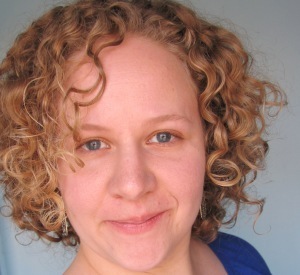How to Write Compelling and Balanced Backstory
By Jeni Chappelle, @jenichappelle
Writers often spend hours creating a realistic and compelling backstory for each major character in their novels. After all that hard work, it’s natural to want to include as much of that as you can. But there’s a fine line between clarifying a character’s past and writing too much backstory. Readers don’t usually need to know much of the characters’ history in order to engage with the story. Here are some ways to help you find the right balance.
The Four I’s
First, let’s revisit what makes an engaging backstory. Only include backstory that fits four criteria—I call it The Four I’s.
Important: It’s directly relevant to the plot.
Individual: It reveals something essential about the character.
Interesting: It pulls the reader in with mystery.
Interval: It’s spread out so it doesn’t overwhelm or bore the reader.
So How Do I Work in Backstory?
There are three main ways to include backstory in your novel: dialogue, narrative summary, and flashbacks. In a long work like a novel, it’s important to use more than one technique, or you risk your backstory feeling stale to readers.
Brief summary
A short narrative summary of the event is often best. This can vary from a few words to a couple sentences. It can be simple exposition, or the character can reflect on it internally, depending on the POV.
When to use: most of your backstory will likely be shown through narrative. Focus on the most important aspects of the past event. Only describe the situation enough to give context to the necessary actions and their impact on the character.
Dialogue
Dialogue allows the character to directly relate his experience. This is especially effective for stories where characters need to know the information, like mystery novels.
When to use: the character is relating a previous experience to someone who doesn’t already know about it. If you could insert “as you know…” or “remember when…” in the character’s speech, you may want to reconsider using dialogue.
Flashback
Flashbacks allow you to show your reader the character’s backstory as if it were happening in real time. It’s written just like the rest of the book, only the verb tense changes to indicate that it takes place outside the timeline of the story.
When to use: there’s too much essential information to use dialogue or a summary. Make sure you provide a setting as to when and where it occurs and that it follows a strong scene, since flashbacks by nature don’t have much urgency.
Some other guidelines
Relevant
I said it once, but it’s so important, I’m going to say it again: relevance is key. If it doesn’t directly impact the plot by either consequences of an action, a character’s motivation, or an important facet of two characters’ relationship (such as how they know one another), it likely doesn’t need to be in the story.
Conflict and Action
Tie the backstory to conflict or action in the main timeline of the story. For example: The POV character reflects on her own childhood after saving a child from a dangerous home. When Important Side Character #1 is introduced, the protagonist tells his current partner that he used to work with ISC#1 and they never liked each other.
Realistic
Stay true to your characters, plot, and the world you’ve created. If your character is emotionally distant, it’s unlikely she will disclose her life story to a lady in line at Starbucks. A murderer probably won’t tell a detective that he and the victim hated each other.
Short
As a rule, backstory needs to be as short as possible so you can get back to the main timeline of the plot. There are always exceptions to this rule, but most of the time you don’t need whole chapters of backstory. If you find that extensive backstory really is needed for clarity, you may need to reconsider where in the timeline you start the main plot.
Breadcrumbs
I always think of the timing of backstory as breadcrumbs, like Hansel and Gretel (although, now that I think about how that ended up in the fairy tale, maybe that’s not the best analogy). You want to leave little clues throughout the story—just enough that the reader can follow the trail. Give them the sense that there’s more to come, but be careful not to cross the line into confusion.
How to handle in a series
I’m often asked how to handle backstory in a series. These same basic rules apply—keep it short and relevant. But since not everyone will read your books in order, there are two big concerns to watch out for: avoid full flashbacks to events from previous books in the series, and try not to spoil the plots of previous books.
Rule of thumb: When in doubt, cut it out.
If you’re not sure whether you should include a certain backstory or not, try deleting it. If the story flows well without it, it isn’t necessary. One writer I know includes these as “deleted scenes” on her website and shares them on social media. That way her readers can still see them, but they don’t have a negative impact on the readability of her story.
How do you work backstory into your book?
Jeni Chappelle is a freelance editor and writing coach. She lives in an itty-bitty town a few miles from Charlotte, NC with her husband, two kids, and what often feels like a million pets. Her clients have published with Penguin, Simon and Schuster, and St. Martin’s. They have won awards and are National, International, and Amazon Bestsellers. She blogs about the writing process, resources for writers, and other aspects of the writer’s life. Go to www.jenichappelle.com to check out her blog and sign up for a free critique.
Image: MorgueFile: Jessica Gale
The post How to Write Compelling and Balanced Backstory appeared first on Elizabeth Spann Craig.



